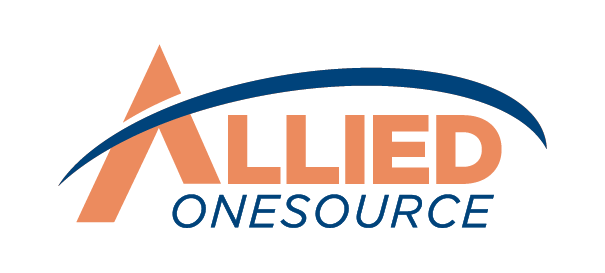Building Pathways: 6 Tips to Create Effective Career Development Plans for Employees
Think of career progression frameworks or plans as answering the classic interview question, "Where do you picture yourself in five years?" This is similar to how employees plan their answers to interview questions. Creating a career progression plan involves considering where each employee sees themselves in the future within the organization and determining the actions required to achieve those goals.
How can you ensure that your investment in employees through a career development plan benefits them and drives significant growth for your organization? Here are some tips and strategies for implementing an effective program. It will empower your team and propel your company ahead.
Mapping Out Your Strategy for Employee Career Advancement
Developing a career development plan demands investment in time and resources. It's a blueprint for your business. It offers increased employee engagement, retention, skill development, and alignment with organizational goals. These plans should be reviewed annually or biannually and updated as employees achieve milestones or organizational needs change.
Managers play a crucial role in this process by providing guidance, support, feedback, and opportunities for growth, collaborating with employees to create and execute development plans.
Here's how employers can implement effective career development plans:
1. Begin by creating an organizational chart.
This is a fundamental step in establishing your company's overall employee structure. The chart should outline the hierarchy of departments and the positions within each department. Once you've established your organizational chart, you can evaluate how creating new roles or consolidating teams may optimize your business operations or reduce costs.
2. Assess existing employees and their respective roles.
Administer a company-wide employee engagement survey or pulse survey. It allows employees to self-assess their work and express their career goals. Whenever feasible, engage in one-on-one meetings with employees to explore deeper into their survey responses:
- How do they perceive their performance in their current role?
- In which areas have they demonstrated expertise or faced challenges?
- What are their career objectives?
- Do they possess the necessary skills for advancement into leadership or managerial positions?
3. Outline the career path for key roles within the organization.
Whether they're starting out as an intern, holding a junior position, or leading as a manager, it's important to offer clear pathways for career growth. Employees should know what roles they can aspire to, what those roles entail, and the steps needed to advance.
Define the following aspects for every position within your company, beginning with the most crucial:
- Job title
- Duties and responsibilities
- Expected tasks and functions
- Performance expectations
Then, outline the milestones and accomplishments to advance to the next level of their career, including:
- Educational qualifications
- Essential soft skills
- Necessary hard skills
- Minimum tenure in the role, industry, or company
- Short-term objectives to accomplish
- Long-term goals to pursue
This framework provides employees with a clear pathway for their professional development. It will guide them towards achieving their career goals step by step. This can also help them understand what is needed to progress in their careers within the organization.
Read More: Here's Why Soft Skills Matter More in a Digital World
4. Establish training and development programs.
To facilitate advancement within the company or acquire specialized skills, employees may require mentorship, coaching, or access to educational courses. Assess your organization's learning and development resources and financial allocation to determine how best to assist each employee or department in their professional development journey.
- Mentorship programs: Establish formal mentorship programs. Experienced employees mentor new hires or those looking to advance in their careers.
- Coaching sessions: Provide one-on-one coaching sessions with experienced leaders or external coaches. This helps employees set and achieve their career development goals.
- Online learning platforms: Subscribe to online learning platforms such as Udemy, Coursera, or LinkedIn Learning. This grants employees access to relevant courses and resources.
- Internal workshops and seminars: Organize internal workshops or seminars on topics relevant to career growth, such as leadership skills, project management, or communication techniques.
- Cross-training opportunities: Where employees can learn new skills or gain exposure to different departments within the company.
- Tuition reimbursement programs: Implement tuition reimbursement programs where employees can pursue further education or certifications related to their field, with the company covering part or all of the costs.
Related Reading: The Role of Staffing Agencies in Bridging the Skills Gap
5. Consider lateral career shifts.
Some employees might not want to become managers or supervisors, and that's perfectly acceptable. Instead, they might prefer to pursue horizontal career shifts rather than vertical advancements. But how does this affect their career advancement within the company? Rather than pushing employees into managerial positions, each career progression framework should present two paths:
- One leading to a managerial role
- One leading to a senior position within their current role (or a comparable role)
It allows your employees to choose the path that aligns best with their goals when the opportunity arises.
For instance, at Bloomberg, job progression is not restricted to the traditional "ladder" centered on upward advancement. This opens up many multidirectional options for individual skills and preferences. The emphasis is less on job titles and more on creating a diverse "career portfolio."
Blomberg's career growth opportunities include:
- Advancing to roles with greater responsibility or leadership opportunities
- Taking on special projects to expand responsibilities
- Moving laterally to a different department or product
- Relocating to increase exposure and broaden perspective
Related Reading: What Employers Need to Know About the Changing Landscape of Skills
6. Assess, revise, and approve.
Once you've established an employee's career development plan, schedule a meeting between management and the employee. During this meeting, they can discuss any uncertainties, address questions, and make any necessary adjustments to ensure its effectiveness.
A recommended approach is encouraging collaboration between the manager and the employee throughout this process. Involving employees in the decision-making and planning increases their sense of ownership and commitment to the career development plan.
This collaborative effort strengthens the employee-manager relationship and the likelihood of the plan being successfully implemented and achieved.
Career Maps: Plotting Employees Path Forward
Employers often use career development plans to support employees of all backgrounds in finding their ideal fit within the organization. This empowers the workforce to visualize their career paths, set ambitious goals, and take proactive steps toward realizing their full potential.
Promotion
Career development plans are often created to move up the organizational ladder. The level of detail in these plans depends on how high an employee aims to climb. For example, someone aspiring to become a Chief Marketing Officer will need extensive experience in various related areas like advertising and corporate communications.
The plan should specify which positions are preferred and the length of time they should spend in each role. On the other hand, an individual aiming to transition from a frontline role to a managerial position might achieve their goal in a shorter timeframe with a shorter development plan.
Whatever path is chosen, collaborating with the Learning and Development team can help identify suitable programs and training opportunities that align with the employees' professional goals.
Read More: The Power of Continuous Learning: Invest in Your Professional Growth
Transition
Encouraging career progression doesn't always mean pushing for an immediate promotion to a higher position. As employees grow, they may naturally become interested in exploring different roles. This interest can arise from various factors. It includes participating in training programs offered by the L&D department, experiencing shifts in the organization's direction, or discovering new career paths.
This organic career evolution interest highlights the importance of providing avenues for employees to explore and pursue diverse opportunities within the company.
Remediation
Not every employee excels, especially when transitioning to higher positions. Challenges such as receiving poor performance reviews, feeling personal uncertainty, or experiencing organizational changes can impact an employee's effectiveness. In the worst-case scenario, they might adopt a survival-mode mentality.
In such cases, employees may not primarily focus on advancing their careers. They might focus on improving their performance and securing their continued organizational presence. When you recognize the need for improvement, you may develop a plan to address their challenges and improve their skills.
Using career development planning this way is a great way to identify the necessary training, coaching, learning opportunities, and assignments needed to support the employee. This way, they can overcome challenges and perform better in their current role. It's a proactive approach to addressing performance issues to encourage growth within the existing job context.
READY TO EMPOWER YOUR TEAM WITH EFFECTIVE CAREER DEVELOPMENT PLANS?
With Allied OneSource, we can help you establish effective career development plans. It will revolutionize the way your employees perceive their professional growth. We also collaborate closely with your team to understand your organizational goals, assess employee needs, and design personalized plans that drive meaningful growth.
Reach out to us today to entrust us to be your partner in building a talented and engaged workforce.










